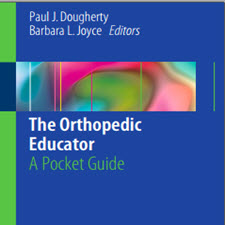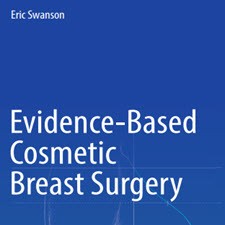Evidence-Based Bunion Surgery
ABSTRACT
The common deformity of the frst ray known as a “bunion” is a progressive positional deformity which leads to pain from shoe pressure and biomechanical malfunction of the frst metatarsal phalangeal joint. While the medial bump is idely considered the etiology of pain, malalignment results in progressive joint adaptation and degeneration. The exact biomechanical fault and the etiology of the progression of the deformity remain unclear. The origin of the terminologies describing this frst ray deformity deserves specifc attention due to the common historical misapplications of terms used to describe disorders of the frst metatarsophalangeal joint (MTPJ) .Bunion is derived from the Latin term bunio, meaning turnip. This term has been applied to describe any enlargement of the frst MTPJ and therefore poorly defnes the deformity . It was not until 1870, when Carl Hueter, a German surgeon, coined the term hallux valgus to more accurately describe the condition . Hueter defned this frst ray deformity as a subluxation of the frst MTPJ in the transverse plane with lateral deviation of the great toe and medial deviation of the frst metatarsal. However, the term hallux valgus raised questions on whether the laterally deviated hallux should be the primary focus of the deformity. Therefore, half a century later, Truslow proposed the term metatarsus primus varus to replace hallux valgus in the belief that the medially deviated frst metatarsal is the primary level of deformity. This is in fact the frst time the primary level of deformity is considered to be located at the frst metatarsal cuneiform joint.
INTRODUCTION
The medial cuneiform has fve surfaces and articulates with the navicular, the intermediate cuneiform, the second metatarsal, and the frst metatarsal. The posterior surface articulates with the navicular. It is triangular or pear shaped, as is the corresponding facet on the navicular. The lateral surface is concave with two articular facets. The facet located superior and anterior is small and oval and articulates with the base of the second metatarsal. The superior and posterior facet is in the shape of an inverted L with the long vertical portion posterior and the shorter arm superior. Two ligaments attach to the lateral surface, the lisfranc ligament and the intercuneiform ligament. The medial surface is roughly pentagonal.
چکیده
ناهماهنگی رایج از پرتو پرتوهای شناخته شده به عنوان “بونون”، یک نوع تغییر شکل موقعیتی پیشرفته است که منجر به درد ناشی از فشار کفش و سوءمصرف بیومکانیک مفاصل فالانگه ای می شود. در حالی که سر و صدای Medial نامشخص علت درد است، مقابله با کمر درد منجر به انقباض متراکم و انحطاط می شود. گسل دقیق بیومکانیکی و علت پیشرفت ناهنجاری هنوز مشخص نیست. منشا اصطلاحات توصیف این ناهمواری پرتوهای پرتو باید با توجه به درخواستهای متداول نادرست از اصطلاحات مورد استفاده برای توصیف اختلالات مفصل متاتارسوفالانگهال (MTPJ) مورد توجه خاص قرار گیرد. بونون از واژه لاتین bunio مشتق شده است، به این معنی که برنزه است. این اصطلاح برای توصیف هر گونه بزرگ شدن MTPJ frst استفاده شده است و بنابراین ضعیف بودن را نقض می کند. تا سال 1870، زمانی که کارل هوتر، جراح آلمانی، اصطلاح hallux valgus را اصلاح کرد، دقیقا شرایط را توصیف کرد. Hueter این تغییر شکل رادیویی پرتو را به عنوان یک فرعی از MTPJ فورست در یک صفحه عرضی با انحراف جانبی لگن بزرگ و انحراف درونی متمرکز برش تعریف کرد. با این حال، اصطلاح hallux valgus سوالاتی را در مورد اینکه آیا hallux در سمت چپ منحرف شده باید تمرکز اصلی تغییر شکل باشد، مطرح کرد. بنابراین، نیم قرن بعد، تروسلو واژه term metatarsus primus varus را برای جایگزینی hallux valgus پیشنهاد کرد و معتقد بود که metatarsal medlyaly deviated substantiation سطح اولیه تغییر شکل است. این در واقع زمان برش است که سطح اولیه تغییر شکل در نظر گرفته شده در جناح پیوندی فورست متمرکز است.
مقدمه
شمعدانی مدرن دارای سطوح چسبنده و با نوکاکولار، کونمیوره متوسط، متریال دوم و فلات قلبی است. سطح خلفی با نوکیکولار بیان می شود. این مثلثی یا گلابی شکل است، همانطور که نقاط متناظر در ناوایکولار است. سطح جانبی دارای دو جنبه مفصلی است. چهره واقع در بالا و قدامی کوچک و بیضی شکل است و با پایه دوم متاتارس شکل می گیرد. چهره برتر و خلفی به شکل یک لبه معکوس با قسمت عمودی بلند خلفی و بازو کوتاه تر است. دو رباط به لبه جانبی، رباط لسفرنک و رباط بین رگه ای متصل می شوند. سطح مدیا تقریبا بطرفی است.
Year: 2016
Publisher: SPRINGER
By : Paul D. Dayton
File Information: English Language/ 254 Page / size: 11.59 MB
سال : 1395
ناشر : SPRINGER
کاری از : پل د دیتون
اطلاعات فایل : زبان انگلیسی / 254 صفحه / حجم : MB 11.59

![Evidence-Based.Bunion.Surgery.A.Critical.Examination.of.[taliem.ir]](https://taliem.ir/wp-content/uploads/Evidence-Based.Bunion.Surgery.A.Critical.Examination.of_.taliem.ir_.jpg)

![Advances.in.Endoscopy.in.Inflammatory.[taliem.ir] Advances.in.Endoscopy.in.Inflammatory.[taliem.ir]](https://taliem.ir/wp-content/uploads/Advances.in_.Endoscopy.in_.Inflammatory.taliem.ir_.jpg)

![Transsphenoidal.Surgery.Complication.Avoidance.[taliem.ir] Transsphenoidal.Surgery.Complication.Avoidance.[taliem.ir]](https://taliem.ir/wp-content/uploads/Transsphenoidal.Surgery.Complication.Avoidance.taliem.ir_.jpg)
![Common.Problems.in.Acute.Care.[taliem.ir] Common.Problems.in.Acute.Care.[taliem.ir]](https://taliem.ir/wp-content/uploads/Common.Problems.in_.Acute_.Care_.taliem.ir_.jpg)
![Advanced Colonoscopy and Endoluminal Surgery[taliem.ir] Advanced Colonoscopy and Endoluminal Surgery[taliem.ir]](https://taliem.ir/wp-content/uploads/Advanced-Colonoscopy-and-Endoluminal-Surgerytaliem.ir_.jpg)
![Operative.Dictations.in.Plastic.and.Reconstructive.[taliem.ir] Operative.Dictations.in.Plastic.and.Reconstructive.[taliem.ir]](https://taliem.ir/wp-content/uploads/Operative.Dictations.in_.Plastic.and_.Reconstructive.taliem.ir_.jpg)
![Vascular.Surgery.A.Global.Perspective.[taliem.ir] Vascular.Surgery.A.Global.Perspective.[taliem.ir]](https://taliem.ir/wp-content/uploads/Vascular.Surgery.A.Global.Perspective.taliem.ir_.jpg)

![Consultation.in.Neurourology.A.Practical.Evidence.[taliem.ir]](https://taliem.ir/wp-content/uploads/Consultation.in_.Neurourology.A.Practical.Evidence.taliem.ir_-150x150.jpg)
![Fundamentals.of.Sexually.Transmitted.Infections.[taliem.ir]](https://taliem.ir/wp-content/uploads/Fundamentals.of_.Sexually.Transmitted.Infections.taliem.ir_-150x150.jpg)
دیدگاه خود را ثبت کنید
تمایل دارید در گفتگو شرکت کنید؟نظری بدهید!